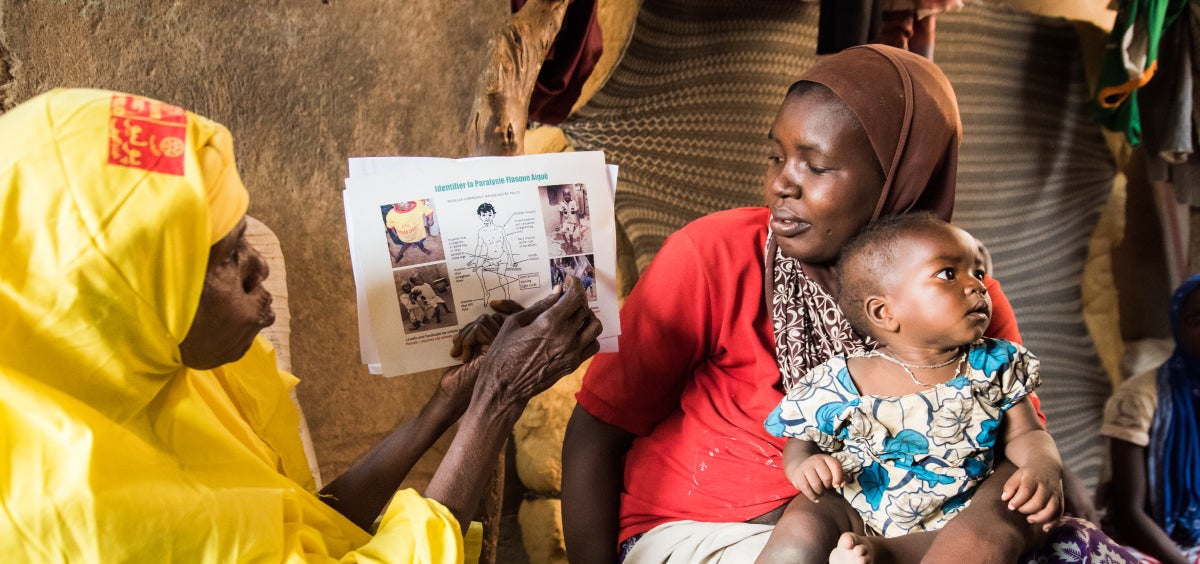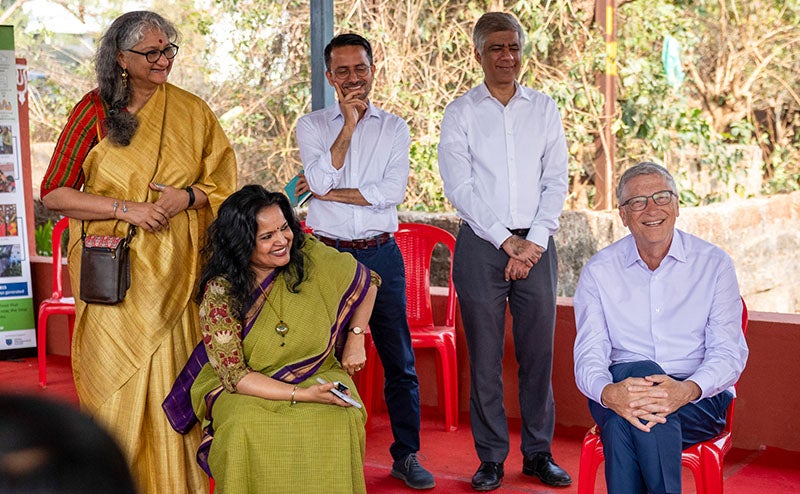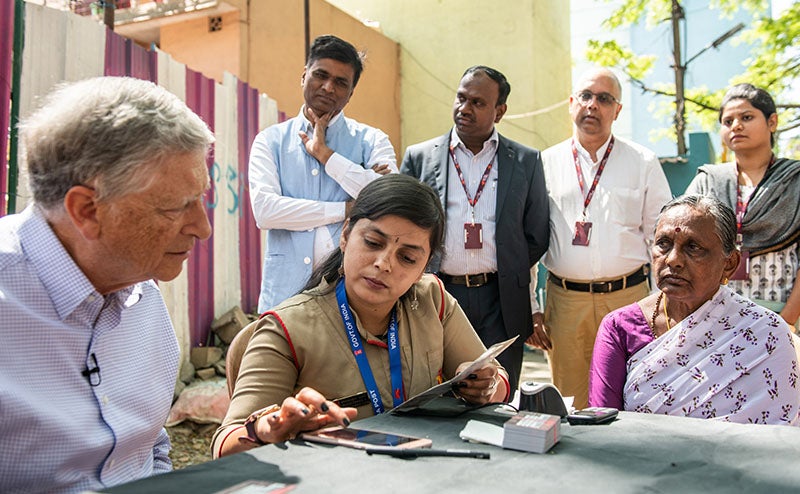Tuberculosis has haunted humanity for millennia—it’s even been found in Egyptian mummies.
I was born just a few months after the first polio vaccine became available. When I was a kid, I had no idea how lucky I was. Just three years earlier, in 1952, the U.S. experienced one of the worst polio epidemics in its history. More than 57,000 kids got sick with the disease. Thousands died.
But thanks to the invention and distribution of the vaccine, I didn’t know anyone who got polio when I was growing up. That’s how quickly it changed the world. My friends and I got vaccinated early, and so we never had to worry about the devastating paralysis the disease can cause.
Today, there are only three countries left that are still polio-endemic: Pakistan, Afghanistan, and Nigeria. The world has pushed the virus to the brink of eradication. If we continue to invest in stopping the disease, a future without polio is within reach.
One of the organizations responsible for this progress is Rotary International. Tomorrow I’m going to speak at one of their district conferences in Spokane, Washington. Here is the full text of my prepared remarks:
Remarks as prepared
Rotary Joint District Conference
May 18, 2019
Spokane, Washington
Thanks, everyone, for welcoming me. And thank you for the very kind introduction.
Today, I want to begin by showing you some maps. They’re maps of the polio virus. Not all that long ago, polio was everywhere. In the year 1988, scientists estimated that there were more than 350,000 new cases of the disease across 125 countries. Most of those cases were children under the age of 5, and the virus paralyzed many of them for life.
But within six years, polio was wiped out in both North and South America. Then, six years after that, in 2000, Australia and its neighboring countries were certified as polio-free. Then, in 2002, Europe was, too.
By 2014, Southeast Asia was declared polio-free – and the virus was gone from most of Africa, as well. Thirty years ago, there were more than 40 new polio cases an hour. Today, there are fewer than 40 polio cases a year. And instead of being in 125 countries, today all but three are certified polio-free: Pakistan, Afghanistan, and Nigeria. (And we hope that Nigeria will be coming off the map soon).
Here’s another way of looking at it: There are more than 18 million people walking the Earth today who would’ve otherwise been paralyzed by polio. And none of it would’ve happened without you.
The world has known how to fight polio for more than half a century. Jonas Salk developed his vaccine before I was born, and the oral polio vaccine – which protects a child from the disease with just two drops – has been around since 1961. But for a long time, the world didn’t have the resources – or the will – to get the vaccine to every single child who needed it.
That only changed in the mid-80s, when Rotary International began to fight polio – and especially in 1988, when this organization – along with others like the WHO, UNICEF, and the CDC – helped found the Global Polio Eradication Initiative.
In the years since, Rotarians have proven themselves heroes in public health. Not only has this organization raised more than $1.8 billion dollars to fight the disease – you have fought it yourselves, sometimes on the front lines.
I’m thinking about Rotarians like Ezra Teshome from Seattle. Every year for the last 22 years, he has brought Rotarians – by the dozens – to his native Ethiopia to vaccinate children. Then there’s Sara Archer of Walla Walla. A few years ago on New Year’s Eve, she took her end-of-year bonus – and traded it for a plane ticket to Pakistan to participate in a vaccination campaign.
And then there’s Joan Toon of Victoria. Some of you may have met Joan. When she was seven years old, polio paralyzed her brother from the neck down. Then, a few weeks later, Joan woke up and couldn’t move her left side. She spent 3 months in a hospital under quarantine – and remembers seeing children in the iron lung.
Joan has devoted much of her adult life fighting the disease that visited her as a child – and convincing other Rotarians to join that fight, too… to raise money and speak to their elected officials.
When you talk to Joan, she’ll also tell you about the time her husband, Terry, came home from a Rotary meeting in the early 1980s. He busted through the door. Rotary, he’d just learned, was going to wipe polio off the face of the Earth. Joan’s response was “Yeah, right.” Back then, she said, “I never imagined that it would happen.”
Today, things are different. We’ve come so close to eradication that now it’s easy to imagine it happening. Instead, people wonder: When can we stop imagining? When will polio eradication be real?
It’s a fair question. When this initiative started, the head of the World Health Organization declared that we could eradicate polio from – quote – “spaceship Earth by the year 2000.” But by the turn of the millennium, about 33 percent of the world’s population was still living in countries where the virus was still endemic. That’s when our foundation got involved. And although we’ve come so close to zero in the years since, that magic number has eluded us. Last year, the total number of polio cases worldwide was 33.
I think all of us are frustrated by this. But Rotarians most of all. Each year, many of you travel around the world, saving children from a terrible disease two drops at a time – and everyone hopes it will be the last year you have to do it; that we’ll have no need for polio vaccination campaigns anymore because polio won’t exist.
But I also think most of us understand the challenge: Fighting polio today is much harder – and different – than fighting it the 80’s and 90’s. The last 40 cases are far more difficult than the first 400,000. And preventing them takes more experience; it takes more grit – and more learning and innovation.
Look at India. The country was once considered the toughest place on earth to eradicate polio – and it was: high population density, low vaccination rates, poor sanitation systems, lots of people moving around the country, many in remote areas.
In 2010, for example, I visited a town in the marshlands of the Bihar province. Each year, the national immunization drive missed thousands of children in the area in part because the nearby Kosi River tended to flood, rendering the town inaccessible.
In response to situations like this, the Indian government – working with organizations like Rotary – launched an all-out effort to reach every child. They commissioned better maps to ensure every part of the country was navigable – and deployed more than 2 million vaccinators to reach every speck of land, including the town I visited. (One of the most inspiring photographs of that time was an image of polio workers wading waist deep in water to reach remote villages with the polio vaccine.)
This year is India’s 5th anniversary of being certified polio-free, and we’re applying many of the same lessons we learned during that effort to the places where polio is still endemic.
For example, just a few years ago, vaccinators in Nigeria were also missing thousands of children – in part because the maps they were using were inaccurate and incomplete. Whole villages weren’t included.
Since then, our understanding of polio’s geography has grown. The maps health workers are using today are detailed and full. In fact, today we not only know where the at-risk populations are – increasingly, we can predict the disease will be. Even before it infects people.
It used to be that we could only identify a polio outbreak once children started showing up paralyzed. Today, though, we have health workers monitoring the sewage – where the polio virus can survive – at 125 separate sites in the corners of Pakistan, Afghanistan, and Nigeria. Monthly – sometimes weekly – they take samples and send them to labs in 70 different countries. If the labs find traces of the disease, the vaccinators know where to go next – and they can immunize people before the virus infects them.
Even in the world’s most dangerous places, we’ve shown that we can stop polio in its tracks. In 2013, for example, polio paralyzed nearly three dozen children who were living in the midst of the Syrian civil war. Vaccinators not only had to enter the war zone – waiting for lulls in the fighting to make sure children were protected – they also had to account for the 2 million refugees fleeing to surrounding Jordan, Lebanon, and Turkey.
Within weeks, the WHO announced a plan to immunize 2.4 million Syrian children, and the outbreak was over by the following year.
So back to the question: When will we eradicate this disease? I think the answer is: sooner than recent history indicates.
We’ve not only cornered the last few cases of polio – we’ve also spent the last few years sharpening the tools and the strategies to finish the job.
The only question is whether we have the will to do it. Whether people and governments still believe eradicating polio is worth it. And that’s more of an open question than I would like.
Over the next 5 years, the Global Polio Eradication Initiative will need a total of $3.27 billion to continue its work.
I suppose it’s natural to wonder whether the time and money wouldn’t be better spent on something else, rather than a handful of cases of a specific disease. But I also know that fighting disease is like fighting fire. It’s not enough to put out most of it. Unless you extinguish it completely, the disease comes roaring back.
Our projections show what would happen if stopped trying to eradicate polio today: By the year 2029, as many as 200,000 children would be infected annually. Within 10 years, we’d backslide to where we were 40 years before.
Back around 2013, when Ethiopia looked to be free of the wild polio virus, a few cases cropped up. For those who’d spent years fighting the disease there – people like Ezra Teshome – it was frustrating. But Ezra and the many other Rotarians who traveled to Ethiopia stuck by a motto. “Never, never, never give up.”
So long as Rotarians continue to believe that – so long as we never give up – then polio does not stand a chance.
Thank you, again, for all your remarkable work.





